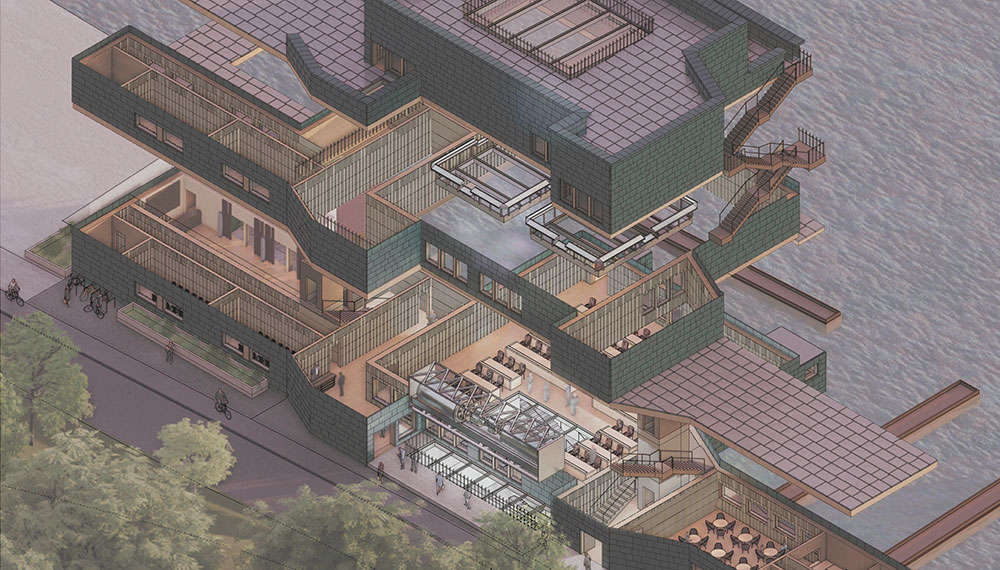Our BA3 students have been working within the territory of Cumbria, a common region of investigation for the whole atelier. Cumbria is home to the largest National Park in England, boasting around 20 million visitors annually. Despite this, the county has obvious challenges.
We asked the students to consider and challenge the romantic notion of the Lakes portrayed through the poems of William Wordsworth, the books of Beatrix Potter, and the writings of the artist and philosopher John Ruskin; all of whom uphold the notion of an untamed dramatic landscape. Yet throughout the Victorian era, the Lakes became increasingly tamed through infrastructural projects such as the building of railways and paddle steamers, bringing visitors in and around the region. These assets are now perceived as part of the region’s character. In 1951, the Lake District National Park, and the policies which govern the space were formed. It is this perceived notion of the Lake District that we asked our BA3 students to challenge.
BA3 students were asked to design the envelope to a small modular nuclear reactor (SNR), considering the additional programmes that they may want to introduce to the edge of Lake Windermere. These additional programmes were derived from their mapping and research into the territory. One of the challenges of this brief was to consider how a nuclear facility could be integrated into one of the UK's most beautiful landscapes without any significant negative impact. In fact, this brief asked students to explore the opportunities that industrial architecture could bring to the region, the National Park and the communities who live and work in the area.
Nuclear energy is traditionally viewed as a substantial piece of infrastructure, relegated to highly secured remote sites such as Sellafield. We asked students to consider how SNRs could be viewed differently when intertwined with our urban environments, offering a greater relationship between communities and their energy production. We asked students to consider what impact their intervention may therefore have on energy security and thus the cost of energy, which are today both significant issues and will remain as such while we move away from fossil fuels.
In response to this question, the third year Infrastructure Space students have proposed a wide range of design responses, which address the atelier context and the students’ own research interests. The diversity of responses and the complexity of the schemes in responding to multiple competing agendas show the strength of our students as design thinkers who can question the world around them and propose well considered and beautifully crafted architectural interventions. It has been a pleasure to work alongside the students on their projects and we wish them all the best with whatever they choose to do next.


